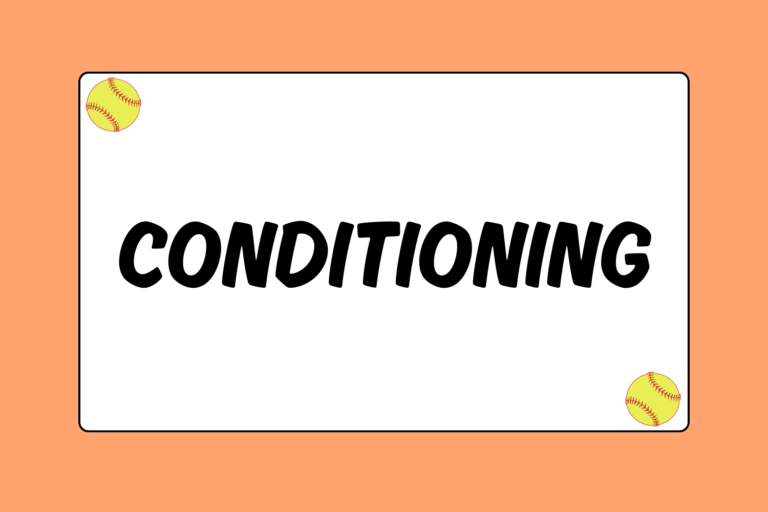Wind affects every athletic game, and softball is especially sensitive because of the ball’s light weight. When in the air, the ball will sway with the slightest breeze. Because of this, every player (especially the outfielders) needs to know how to read the wind and how to adapt her approach to play the ball. This softball guide offers a handful of helpful tips that will help you interpret the wind and adjust your game to make the plays.
How to Read the Wind
Before you learn how to play in the wind, you must first know how to read it. You need to know how to recognize the wind’s strength and its direction before every pitch. Especially in the outfield, you can’t be lazy and assume the next pitch is going to be thrown in perfect conditions — you have to test the wind. Below are three of the easiest ways to interpret the wind’s direction:
- Throw grass: This is perhaps the easiest tester for an outfielder and should be done before every pitch in a windy situation. Because grass is so light, it will easily fall in the direction of the wind. Simply pick up a few pieces and toss it up in front of you and watch where and how far the wind carries it.
- Look at a flag: Most fields or softball complexes will have a flag located somewhere within view. So when it’s windy, simply look at the flag. It will tell you how strong the wind is (whether it’s flapping tremendously or just lightly) and in which direction the wind is headed (just look at the direction the flag is facing in relation to the pole and you’ve got a natural indicator).
- Get a feel for it: Have you ever seen someone lick their finger and stick it in the air to predict the wind’s direction? Well, it’s easy enough and a fairly reliable indicator. However, it isn’t always the best test because some people can’t decipher the difference between different directions. Sure, they’ll be able to tell that it’s windy, but what you need to look for is the direction. Use the first two methods before relying on this one.
Mental Edge
You’ve undoubtedly experienced different wind speeds before, but can you actually tell how fast the wind is blowing? By paying attention to the trees, you can get a pretty accurate estimate of the wind speed
- 2 mph: Air movement is unnoticeable.
- 6 mph: Leaves rustle.
- 12 mph: Leaves are in motion.
- 17 mph: Small branches on a tree move.
- 23 mph: Small trees sway.
- 29 mph: Large branches sway.
- 35 mph: Whole trees are in motion.
- 40 mph: Twigs break of trees.
How to Adapt Your Approach
Now that you know how to read the wind, you’ll need to learn how to play with it. The tips below offer ways to adapt your approach to a ball in the wind, depending on the wind’s strength and direction:
- Wind is blowing straight at you (towards the outfield fence): When the wind is blowing towards the outfield, anticipate the ball being carried to the fence.
- If you are in the infield, go after the ball hard. The outfield may already be playing back in anticipation of the ball carrying with the wind, so you may have to cover more territory on the green if an infield pop-up is carried out.
- If you are in the outfield, focus on getting behind the ball. Keep your feet moving; you’ll need a great drop step every time. Anticipate that a high ball is going to be carried a little farther than normal, so hesitate before charging in for a short fly ball.
- Wind is blowing in (towards the infield): Any high ball will hit this type of wind like a wall, so every player needs to anticipate the ball falling shorter than normal.
- If you are in the infield, start in the base line and steadily creep forward. Keep your feet moving and be ready to come forward (and dive if necessary!) on a short pop-up.
- If you are in the outfield, play a little more forward than usual. Drop step as usual (your first step is always back), but be ready to charge in to cover a ball that comes up short.
- Wind is blowing to the left: When the wind is blowing to the left, anticipate the ball having a little more leftward curve.
- If you are in the infield, anticipate the ball being carried to the player to your left. For example, if you are playing second base, anticipate that the first baseman may be better suited to make the catch.
- If you are in the outfield, cheat to the left before the pitch and be ready to play the left side of your territory. That is, if you play center field, be ready to cover everything from right center to left center. If you play right field, be ready to cover everything from right field to the fence; and if you play left field, be ready to cover anything from the foul line to center left.
- Wind is blowing to the right: Similar to leftward-bound wind, when the wind is blowing to the right, anticipate the ball having a rightward tendency.
- If you are in the infield, anticipate the ball being carried to the player to your right. For example, if you are playing shortstop, anticipate that the third baseman may be better suited to make the catch.
- If you are in the outfield, cheat to the right before the pitch and be ready to play the right side of your territory. That is, if you play right field, be ready to cover everything from the fence to deep right center.
Tips for Success
Now that you know how to read the wind and adapt your approach to make the plays, there are a few more tips that you should keep in mind to be successful in even the strongest gusts of wind:
- Call the ball at the last moment: Because you can only predict where the ball will go, call the ball at the last moment. Especially because the ball will be moving so much, calling the ball late will prevent crashes and dropped balls.
- Keep your feet moving: A really high ball has the greatest chance of catching the wind and is likely to move a lot in the air. When you get under it, keep your feet moving. This will put you in the best position to react to direction changes.
- Crow hop hard: This tip is specific to outfielders. Because balls will be held up in the wind, you often won’t have to sprint full speed to catch it. But you’ll need a hard crow hop if you’re back at the fence to get the ball in to make a play.
Overcome & Conquer
With the tips in this guide, you’ll be ahead of the game when it comes to wind. No coach will accept a dropped ball if your excuse is that the wind took it. Learn to play with it and you’ll conquer any wind that hits your field.





